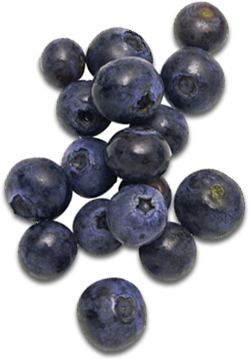no items to display
Pick a Peck of Perfect Produce: How to Choose Vegetables for the Best Freshness, Flavor, and Nutrition
This message from avocadoes made me laugh, because it reflects my experience exactly. Haven’t we all waited for fruits and vegetables to ripen, only to find we’ve missed the perfect window? And while we’re on the topic of ripeness, haven’t we all wondered what to look for when selecting ripe vegetables — and what to avoid? Fear no more! With this handy LifeHacker infographic, you’ll be able to tell which vegetables are in season when and how to pick them at their peak of ripeness.
I do garden, and I like to buy as much produce as I can at my local farmers’ market, which helps keep me in tune with seasonal vegetables. I’ve also gotten pretty good at telling which veggies are winners and which are duds. But even so, this LifeHacker infographic taught me some useful new things. For example:
· Some vegetables are available year-round and others are truly seasonal. You can buy grocery store staples such as beans, beets, broccoli, celery, greens, lettuce, mushrooms, onions, and potatoes pretty much any time of year. But other veggies have peak seasons, such as artichokes (April/May), endive (winter/spring), corn (May-Sept.), cucumbers (summer), eggplant and peppers (late summer), cauliflower (Sept-Jan), and squash (fall/winter).
· For many vegetables, bigger is not always better. Cucumbers that are too wide, and parsnips and turnips that are too big, will not be as tasty as their more petite counterparts.
· For other vegetables, compactness is important. For example, the scales on an artichoke and the tips of an asparagus should be tightly closed. Likewise, the cap of a mushroom should be either closed against the stem or just barely open. When these parts start to spread apart, the vegetable is past its prime.
· Signs of ripeness can be opposite for different vegetables. Everyone knows carrots should be rigid and not bend, but for okra, it’s the other way around. A flexible pod is ripe, while a stiff one is fibrous.
· Color is a good indicator of quality. Go for deeply colored peppers; bright-red tomatoes; dark-green broccoli, greens, and Brussels sprouts; creamy-white cauliflower; and dark-purple eggplants.
· Your intuition is often right. You want to heed your instincts and avoid telltale signs of age and disease, such as discolored spots (grayish-black for artichokes; green for carrots, potatoes, and onions; yellow for broccoli; dark brown for eggplant), mold, wilting, obvious decay, and any sign of insects.
Buying produce in season is a smart move. It’s less likely to have travelled long distances, and more likely to be at its peak of freshness, flavor, and nutrition. In-season produce is often cheaper, too.
The only thing better than buying in-season produce? Growing your own! Gardening is one of the best ways to assure your produce is as fresh as possible, and Tower Garden is one of the best ways to garden. This vertical, aeroponic system fits in a space as small as a balcony and can grow a wide variety of fruits, vegetables, and herbs — with no soil and just a fraction of the water used by traditional gardening.
What’s your favorite season for produce? Do you have any tips or tricks to share that help you buy the best of the bunch?






